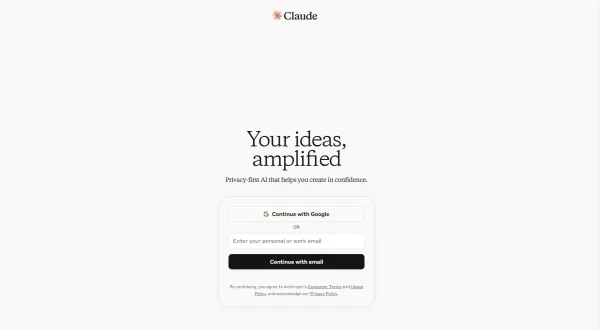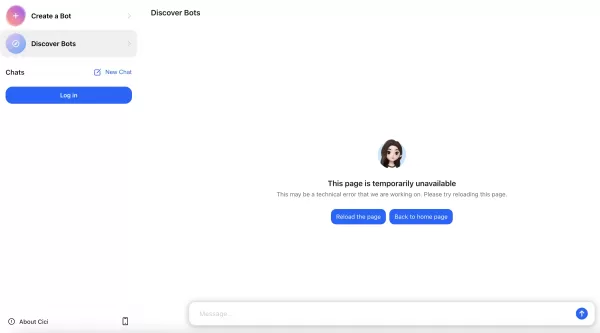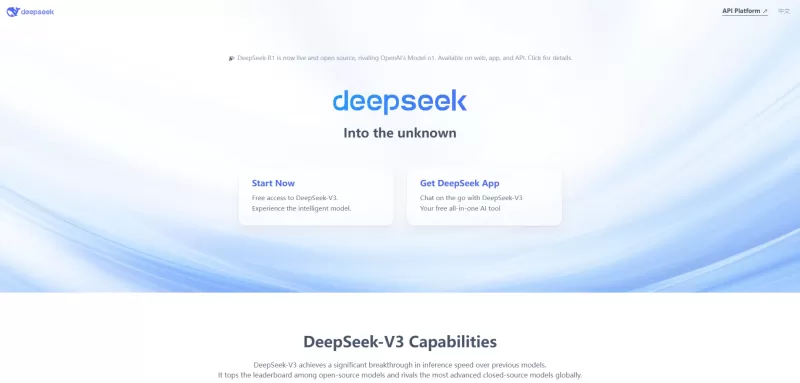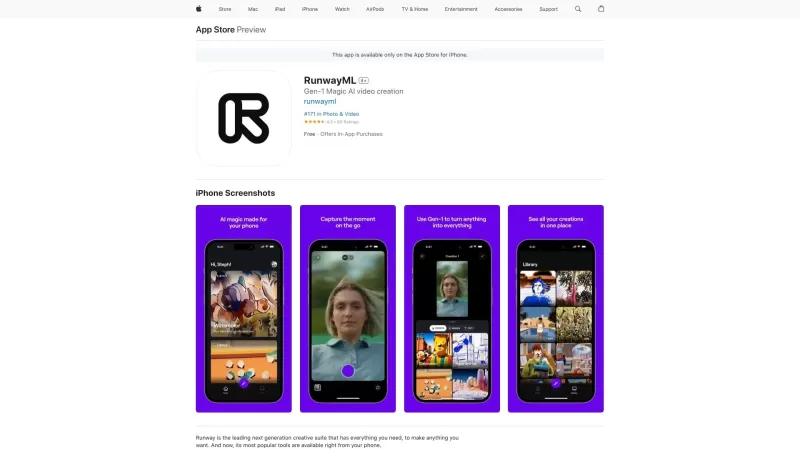AI Art Evolves: From Static Images to Dynamic Masterpieces
Exploring the Evolution of AI Art: From Static Images to Dynamic Experiences
Artificial intelligence (AI) is reshaping the art world in ways that challenge our understanding of creativity and artistic expression. As we delve into the evolution of AI art, we'll see how it has transformed from merely generating static images to creating dynamic, interactive art experiences. We'll discuss significant milestones, the technologies driving this evolution, and what the future might hold for AI-generated art.
Key Points
- The initial phase of AI art centered on static images generated using algorithms like GANs.
- Dynamic AI art now includes interactive elements and real-time data, offering evolving art experiences.
- Advancements in machine learning, neural networks, and data processing have propelled the evolution of AI art.
- AI tools are increasingly accessible, making it easier for everyone to create sophisticated digital art.
- The integration of AI art into various industries is fostering innovation and new forms of expression.
The Dawn of AI Art: Static Images and GANs
Genesis of AI Image Generation
The journey of AI art began with algorithms designed to generate static images. Early experiments often produced basic results, but they set the stage for more advanced techniques. A pivotal advancement came with the introduction of Generative Adversarial Networks (GANs). These networks use a generator and a discriminator that compete against each other. The generator produces images, while the discriminator evaluates them, distinguishing between real and generated images. This competition drives both components to improve, resulting in more realistic and artistic outputs. The field of AI image generation is continually evolving, with new methods being developed all the time.
Generative Adversarial Networks (GANs)
GANs feature two main elements: the generator and the discriminator. The generator's goal is to create new, synthetic data that closely mimics real data by learning its underlying patterns. Meanwhile, the discriminator acts as a critic, trying to differentiate between real and generated data. This back-and-forth process pushes both networks to enhance their performance. As the generator gets better at creating convincing data, the discriminator becomes more skilled at spotting fakes. This dynamic interaction creates a feedback loop that refines the training process, leading to highly realistic and coherent images. The practical applications of GANs span from functional to purely artistic endeavors.
Milestones in Static AI Art
Several milestones have marked the progress of static AI art. A standout example is the "Edmond de Belamy" portrait by Obvious, which fetched $432,500 at a Christie's auction in 2018. This event thrust AI art into the spotlight, igniting discussions about AI's role in creativity.
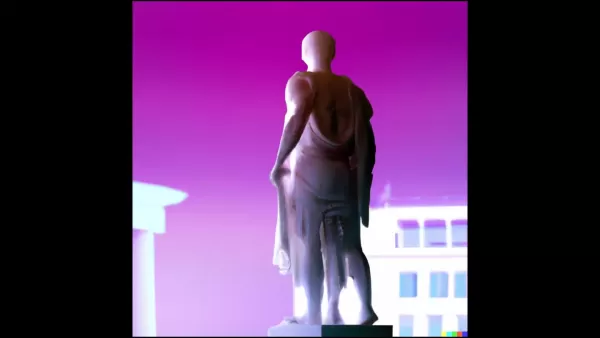
Other notable achievements include AI models capable of creating high-resolution photorealistic images, mimicking artistic styles, and crafting complex compositions. These developments showcased AI's potential to produce art that rivals human creations. Let's take a look at a table that outlines the evolution of AI art across different generations and their milestones.
Generations of AI Art
The Evolution of AI Generated Art
Generation Key Technologies Notable Achievements 1st Basic Algorithms, Early Neural Networks Rudimentary image generation, limited realism, proof of concept 2nd Generative Adversarial Networks (GANs) Realistic image generation, artistic style transfer, "Edmond de Belamy" portrait auction 3rd Advanced GANs, Variational Autoencoders (VAEs) High-resolution photorealistic images, complex compositions, improved control over generated content 4th Diffusion Models, Transformers Enhanced realism, coherence, and control, integration with text prompts (e.g., DALL-E, Midjourney), dynamic art experiences, real-time interactive installations
As you can see, AI art has come a long way. Each generation has become more impressive as technology advances.
FAQ
What are the key differences between static and dynamic AI art?
Static AI art involves generating images that don't change once they're created. Dynamic AI art, however, includes interactive elements and real-time data, creating art that evolves over time.
How have GANs contributed to the evolution of AI art?
GANs have significantly enhanced the realism and artistic quality of AI-generated images. By pitting a generator against a discriminator, GANs produce increasingly sophisticated and visually appealing results.
What technologies are essential for creating dynamic AI art?
Key technologies for dynamic AI art include advancements in machine learning, neural networks, data processing, and real-time computing. These allow AI to process and respond to complex data streams in real-time, creating interactive and evolving art experiences.
How can I start exploring AI art creation?
You can dive into AI art creation with user-friendly tools like DALL-E, Midjourney, and RunwayML. These platforms provide easy-to-use interfaces that enable anyone to create AI art, regardless of technical expertise.
What are the ethical considerations surrounding AI art?
Ethical considerations in AI art include issues like copyright, authorship, and the potential for misuse. Addressing these concerns is crucial for ensuring that AI art is used responsibly and ethically.
Related Questions
How does AI impact traditional art forms?
AI's influence on traditional art forms is multifaceted. It can enhance traditional art with new tools and techniques, such as AI-assisted painting and sculpture. It also challenges traditional notions of creativity and authorship, sparking debates about AI's role in artistic expression. Ultimately, AI is transforming how artists create and how audiences experience art.
What are the potential drawbacks of AI-generated art?
Potential drawbacks of AI-generated art include the risk of homogenization, where AI works might lack originality or emotional depth. There are also concerns about copyright and ownership, as AI art may incorporate elements from existing works without proper attribution. Additionally, there's a worry about devaluing human artistic skills as AI becomes more capable of creating art. It's important to consider these factors carefully when using AI in art creation to mitigate potential negative impacts.
How can AI art be used for social good?
AI art can be harnessed for social good in various ways. It can create accessible art experiences for people with disabilities, such as AI-generated art that responds to sound or movement. It can also raise awareness about social and environmental issues through compelling data visualizations. Moreover, AI art can promote creativity and self-expression in underserved communities by providing access to affordable and user-friendly art tools. These are all ways we can use AI to enhance our society.
Related article
 Mariah Carey and Michael Jackson Unite in Stunning AI-Generated Duet
The Future of Music Collaboration: Mariah Carey and Michael Jackson's AI-Generated DuetPicture two legendary voices coming together in perfect harmony - Mariah Carey's breathtaking five-octave range blending seamlessly with Michael Jackson's iconic v
Mariah Carey and Michael Jackson Unite in Stunning AI-Generated Duet
The Future of Music Collaboration: Mariah Carey and Michael Jackson's AI-Generated DuetPicture two legendary voices coming together in perfect harmony - Mariah Carey's breathtaking five-octave range blending seamlessly with Michael Jackson's iconic v
 Dundundance: The Viral Dance Trend Taking Over Social Media
Have you discovered the internet's latest dance obsession that's equal parts hilarious and absolutely addictive? Meet Dundundance - the viral sensation that's not just about steps, but about unleashing pure joy through movement. This global phenomeno
Dundundance: The Viral Dance Trend Taking Over Social Media
Have you discovered the internet's latest dance obsession that's equal parts hilarious and absolutely addictive? Meet Dundundance - the viral sensation that's not just about steps, but about unleashing pure joy through movement. This global phenomeno
 "Exploring AI Safety & Ethics: Insights from Databricks and ElevenLabs Experts"
As generative AI becomes increasingly affordable and widespread, ethical considerations and security measures have taken center stage. ElevenLabs' AI Safety Lead Artemis Seaford and Databricks co-creator Ion Stoica participated in an insightful dia
Comments (8)
0/200
"Exploring AI Safety & Ethics: Insights from Databricks and ElevenLabs Experts"
As generative AI becomes increasingly affordable and widespread, ethical considerations and security measures have taken center stage. ElevenLabs' AI Safety Lead Artemis Seaford and Databricks co-creator Ion Stoica participated in an insightful dia
Comments (8)
0/200
![AlbertWalker]() AlbertWalker
AlbertWalker
 August 10, 2025 at 5:00:59 PM EDT
August 10, 2025 at 5:00:59 PM EDT
AI art turning static images into dynamic masterpieces is wild! It's like watching a painting come to life—mind-blowing creativity! 🤯 But I wonder, will artists embrace this or feel threatened by it?


 0
0
![RalphMartínez]() RalphMartínez
RalphMartínez
 August 10, 2025 at 3:00:59 PM EDT
August 10, 2025 at 3:00:59 PM EDT
AI art blowing my mind! From static pics to wild, moving masterpieces—it's like watching creativity evolve in real-time. Can't wait to see where this tech takes us next! 🎨✨


 0
0
![WillieScott]() WillieScott
WillieScott
 August 5, 2025 at 7:00:59 PM EDT
August 5, 2025 at 7:00:59 PM EDT
AI art is blowing my mind! From static pics to dynamic masterpieces, it's like watching creativity evolve in real-time. Can't wait to see where this tech takes us next! 😍


 0
0
![ScarlettWhite]() ScarlettWhite
ScarlettWhite
 April 26, 2025 at 7:31:40 PM EDT
April 26, 2025 at 7:31:40 PM EDT
AI Art Evolves is mind-blowing! It's fascinating to see how AI has moved from static images to creating dynamic masterpieces. The transition is seamless and the results are stunning. Sometimes the art feels a bit too abstract for me, but overall, it's a must-try for any art lover! 😍


 0
0
![JasonMartin]() JasonMartin
JasonMartin
 April 26, 2025 at 5:36:24 AM EDT
April 26, 2025 at 5:36:24 AM EDT
AI Art Evolves é incrível! É fascinante ver como a IA evoluiu de imagens estáticas para criar obras-primas dinâmicas. A transição é suave e os resultados são deslumbrantes. Às vezes, a arte parece um pouco abstrata demais para mim, mas no geral, é uma experiência que você não pode perder. Recomendado! 😊


 0
0
![JohnGarcia]() JohnGarcia
JohnGarcia
 April 25, 2025 at 7:46:31 PM EDT
April 25, 2025 at 7:46:31 PM EDT
¡AI Art Evolves es increíble! Me encanta ver cómo el arte generado por IA ha evolucionado desde imágenes estáticas hasta obras maestras dinámicas. La transición es fluida y los resultados son impresionantes. A veces el arte es un poco abstracto para mi gusto, pero en general, es una experiencia que no te puedes perder. ¡Recomendado! 😊


 0
0
Exploring the Evolution of AI Art: From Static Images to Dynamic Experiences
Artificial intelligence (AI) is reshaping the art world in ways that challenge our understanding of creativity and artistic expression. As we delve into the evolution of AI art, we'll see how it has transformed from merely generating static images to creating dynamic, interactive art experiences. We'll discuss significant milestones, the technologies driving this evolution, and what the future might hold for AI-generated art.
Key Points
- The initial phase of AI art centered on static images generated using algorithms like GANs.
- Dynamic AI art now includes interactive elements and real-time data, offering evolving art experiences.
- Advancements in machine learning, neural networks, and data processing have propelled the evolution of AI art.
- AI tools are increasingly accessible, making it easier for everyone to create sophisticated digital art.
- The integration of AI art into various industries is fostering innovation and new forms of expression.
The Dawn of AI Art: Static Images and GANs
Genesis of AI Image Generation
The journey of AI art began with algorithms designed to generate static images. Early experiments often produced basic results, but they set the stage for more advanced techniques. A pivotal advancement came with the introduction of Generative Adversarial Networks (GANs). These networks use a generator and a discriminator that compete against each other. The generator produces images, while the discriminator evaluates them, distinguishing between real and generated images. This competition drives both components to improve, resulting in more realistic and artistic outputs. The field of AI image generation is continually evolving, with new methods being developed all the time.
Generative Adversarial Networks (GANs)
GANs feature two main elements: the generator and the discriminator. The generator's goal is to create new, synthetic data that closely mimics real data by learning its underlying patterns. Meanwhile, the discriminator acts as a critic, trying to differentiate between real and generated data. This back-and-forth process pushes both networks to enhance their performance. As the generator gets better at creating convincing data, the discriminator becomes more skilled at spotting fakes. This dynamic interaction creates a feedback loop that refines the training process, leading to highly realistic and coherent images. The practical applications of GANs span from functional to purely artistic endeavors.
Milestones in Static AI Art
Several milestones have marked the progress of static AI art. A standout example is the "Edmond de Belamy" portrait by Obvious, which fetched $432,500 at a Christie's auction in 2018. This event thrust AI art into the spotlight, igniting discussions about AI's role in creativity.

Other notable achievements include AI models capable of creating high-resolution photorealistic images, mimicking artistic styles, and crafting complex compositions. These developments showcased AI's potential to produce art that rivals human creations. Let's take a look at a table that outlines the evolution of AI art across different generations and their milestones.
Generations of AI Art
The Evolution of AI Generated Art
| Generation | Key Technologies | Notable Achievements |
|---|---|---|
| 1st | Basic Algorithms, Early Neural Networks | Rudimentary image generation, limited realism, proof of concept |
| 2nd | Generative Adversarial Networks (GANs) | Realistic image generation, artistic style transfer, "Edmond de Belamy" portrait auction |
| 3rd | Advanced GANs, Variational Autoencoders (VAEs) | High-resolution photorealistic images, complex compositions, improved control over generated content |
| 4th | Diffusion Models, Transformers | Enhanced realism, coherence, and control, integration with text prompts (e.g., DALL-E, Midjourney), dynamic art experiences, real-time interactive installations |
As you can see, AI art has come a long way. Each generation has become more impressive as technology advances.
FAQ
What are the key differences between static and dynamic AI art?
Static AI art involves generating images that don't change once they're created. Dynamic AI art, however, includes interactive elements and real-time data, creating art that evolves over time.
How have GANs contributed to the evolution of AI art?
GANs have significantly enhanced the realism and artistic quality of AI-generated images. By pitting a generator against a discriminator, GANs produce increasingly sophisticated and visually appealing results.
What technologies are essential for creating dynamic AI art?
Key technologies for dynamic AI art include advancements in machine learning, neural networks, data processing, and real-time computing. These allow AI to process and respond to complex data streams in real-time, creating interactive and evolving art experiences.
How can I start exploring AI art creation?
You can dive into AI art creation with user-friendly tools like DALL-E, Midjourney, and RunwayML. These platforms provide easy-to-use interfaces that enable anyone to create AI art, regardless of technical expertise.
What are the ethical considerations surrounding AI art?
Ethical considerations in AI art include issues like copyright, authorship, and the potential for misuse. Addressing these concerns is crucial for ensuring that AI art is used responsibly and ethically.
Related Questions
How does AI impact traditional art forms?
AI's influence on traditional art forms is multifaceted. It can enhance traditional art with new tools and techniques, such as AI-assisted painting and sculpture. It also challenges traditional notions of creativity and authorship, sparking debates about AI's role in artistic expression. Ultimately, AI is transforming how artists create and how audiences experience art.
What are the potential drawbacks of AI-generated art?
Potential drawbacks of AI-generated art include the risk of homogenization, where AI works might lack originality or emotional depth. There are also concerns about copyright and ownership, as AI art may incorporate elements from existing works without proper attribution. Additionally, there's a worry about devaluing human artistic skills as AI becomes more capable of creating art. It's important to consider these factors carefully when using AI in art creation to mitigate potential negative impacts.
How can AI art be used for social good?
AI art can be harnessed for social good in various ways. It can create accessible art experiences for people with disabilities, such as AI-generated art that responds to sound or movement. It can also raise awareness about social and environmental issues through compelling data visualizations. Moreover, AI art can promote creativity and self-expression in underserved communities by providing access to affordable and user-friendly art tools. These are all ways we can use AI to enhance our society.
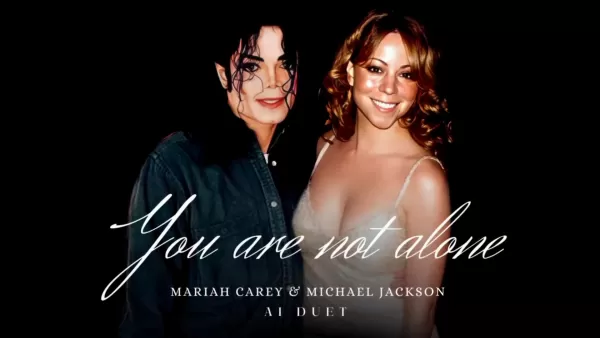 Mariah Carey and Michael Jackson Unite in Stunning AI-Generated Duet
The Future of Music Collaboration: Mariah Carey and Michael Jackson's AI-Generated DuetPicture two legendary voices coming together in perfect harmony - Mariah Carey's breathtaking five-octave range blending seamlessly with Michael Jackson's iconic v
Mariah Carey and Michael Jackson Unite in Stunning AI-Generated Duet
The Future of Music Collaboration: Mariah Carey and Michael Jackson's AI-Generated DuetPicture two legendary voices coming together in perfect harmony - Mariah Carey's breathtaking five-octave range blending seamlessly with Michael Jackson's iconic v
 Dundundance: The Viral Dance Trend Taking Over Social Media
Have you discovered the internet's latest dance obsession that's equal parts hilarious and absolutely addictive? Meet Dundundance - the viral sensation that's not just about steps, but about unleashing pure joy through movement. This global phenomeno
Dundundance: The Viral Dance Trend Taking Over Social Media
Have you discovered the internet's latest dance obsession that's equal parts hilarious and absolutely addictive? Meet Dundundance - the viral sensation that's not just about steps, but about unleashing pure joy through movement. This global phenomeno
 "Exploring AI Safety & Ethics: Insights from Databricks and ElevenLabs Experts"
As generative AI becomes increasingly affordable and widespread, ethical considerations and security measures have taken center stage. ElevenLabs' AI Safety Lead Artemis Seaford and Databricks co-creator Ion Stoica participated in an insightful dia
"Exploring AI Safety & Ethics: Insights from Databricks and ElevenLabs Experts"
As generative AI becomes increasingly affordable and widespread, ethical considerations and security measures have taken center stage. ElevenLabs' AI Safety Lead Artemis Seaford and Databricks co-creator Ion Stoica participated in an insightful dia
 August 10, 2025 at 5:00:59 PM EDT
August 10, 2025 at 5:00:59 PM EDT
AI art turning static images into dynamic masterpieces is wild! It's like watching a painting come to life—mind-blowing creativity! 🤯 But I wonder, will artists embrace this or feel threatened by it?


 0
0
 August 10, 2025 at 3:00:59 PM EDT
August 10, 2025 at 3:00:59 PM EDT
AI art blowing my mind! From static pics to wild, moving masterpieces—it's like watching creativity evolve in real-time. Can't wait to see where this tech takes us next! 🎨✨


 0
0
 August 5, 2025 at 7:00:59 PM EDT
August 5, 2025 at 7:00:59 PM EDT
AI art is blowing my mind! From static pics to dynamic masterpieces, it's like watching creativity evolve in real-time. Can't wait to see where this tech takes us next! 😍


 0
0
 April 26, 2025 at 7:31:40 PM EDT
April 26, 2025 at 7:31:40 PM EDT
AI Art Evolves is mind-blowing! It's fascinating to see how AI has moved from static images to creating dynamic masterpieces. The transition is seamless and the results are stunning. Sometimes the art feels a bit too abstract for me, but overall, it's a must-try for any art lover! 😍


 0
0
 April 26, 2025 at 5:36:24 AM EDT
April 26, 2025 at 5:36:24 AM EDT
AI Art Evolves é incrível! É fascinante ver como a IA evoluiu de imagens estáticas para criar obras-primas dinâmicas. A transição é suave e os resultados são deslumbrantes. Às vezes, a arte parece um pouco abstrata demais para mim, mas no geral, é uma experiência que você não pode perder. Recomendado! 😊


 0
0
 April 25, 2025 at 7:46:31 PM EDT
April 25, 2025 at 7:46:31 PM EDT
¡AI Art Evolves es increíble! Me encanta ver cómo el arte generado por IA ha evolucionado desde imágenes estáticas hasta obras maestras dinámicas. La transición es fluida y los resultados son impresionantes. A veces el arte es un poco abstracto para mi gusto, pero en general, es una experiencia que no te puedes perder. ¡Recomendado! 😊


 0
0
